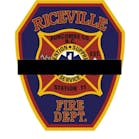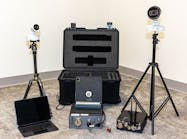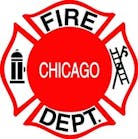Study Exploring MA Stations and Cancer
By Craig S. Semon
Source Telegram & Gazette, Worcester, Mass.
Nov. 27 -- Two Central Massachusetts fire departments are participants in a study examining whether the conditions in, and construction of, old firehouses may be a contributing factor in cancer-related illnesses among firefighters.
Emily Sparer-Fine, research associate for the state Department of Environmental Health at Harvard T.H. Chan School of Public Health in Boston, is conducting the study. Previously, she worked as a researcher at the Dana-Farber Cancer Institute. While at Dana-Farber, Ms. Sparer-Fine started working with firefighter issues.
When Joseph E. Finn became the state fire commissioner in 2015, he made campus prevention and firefighters' health a priority, Ms. Sparer-Fine said.
Commissioner Finn reached out to Dana-Farber, saying that the state needed more resources on firefighters' health, she said.
Ms. Sparer-Fine had a series of meetings with the commissioner and others from the Boston Fire Department and its union and took a broader look at firefighters' health issues, asking questions such as whether a higher risk of cancer-related illnesses was an inherent hazard of the job.
Her research took her to the firehouse.
"There are lots of studies out there documenting the fact that firefighters do have high rates of cancer. There are lots of studies looking at chemical exposure on the firegrounds," Ms. Sparer-Fine said. "But nobody was really talking what is happening at the firehouse. What gets brought back from fires or diesel exhausts from the trucks, and whether or not it is permeating into living quarters."
She started looking at whether the buildings and environment of the firehouses were a culprit in cancer.
"So while nobody's talking about it from the scientific side, every firefighter that I asked about the firehouse, it's the first thing they talked about," she said. "They said the conditions are horrible. The building is a mess. You see dust pile up way too quickly. You feel that you are sniffling when you're at work and it only leaves when you get home after a few hours. And, that to me, all jumped out that we need to look at the firehouse."
In 2016, Ms. Sparer-Fine did a pilot study looking at the air quality in three Boston firehouses and a new firehouse in Arlington. She said the study showed that building layout and design had the potential to influence exposure at the firehouse, despite every single one of the firehouses in the study having some form of diesel capture system to collect firetruck exhaust.
With just one week's worth of data, Ms. Sparer-Fine was able to show that peak times of fine particulate matter from the diesel exhausts were found in living quarters of the older firehouses when the truck left and returned from a call, while the new firehouse did not show an abundance of fine particulate matter in the living quarters. Such particulate is an air pollutant that is a concern for people's health when levels in air are high.
"As a firefighter, when a call comes through, every second matters," she said. "So, I think, historically, there was an effort in designing fire stations to put the living quarters near the trucks."
For her current study, Ms. Sparer-Fine is testing air quality for a two-week period from 11 departments and 20 firehouses (10 in Boston and 10 throughout the state, including Auburn, where the data was collected this month, and in Westboro, where it was done during the summer).
She hopes to be done with data collection by the end of January and then take a few months to process her findings and gain a better understanding of whether firehouses are contributing to this silent culprit.
"I believe that the building matters on how it helps contaminants move throughout the station," she said. "I do feel confident there. I think the building is important."
At the Auburn fire station, Ms. Sparer-Fine placed three air quality monitoring devices in the station, one on the base floor, one in the kitchen and one in the bunk room. After a week monitoring the air quality in the building, she replaced the filters and began collecting data for a second week.
Not only is the study looking at air quality but it's also comparing air quality in the older and newer stations.
"My office is right off the apparatus floor," Auburn Fire Chief Stephen M. Coleman Jr. said. "When you build a new fire station, I'm not going to be anywhere near a firetruck. "
Chief Coleman, who will celebrate his 29th year as a firefighter in December, said the Auburn firehouse opened its apparatus bay doors for the first time in 1964.
Auburn's previous chief, Roger G. Belhumeur, died in May 2016 after a 16-year battle with cancer. He was 67. Chief Coleman said Chief Belhumeur's cancer was attributed to the job.
"You could walk into the fire station three or four days after a fire and the station still stunk like fire. But we didn't know the science behind it. That it was our actual equipment that was off-gassing, producing elevated levels of carbon monoxide, hydrogen cyanide, you name in," Chief Coleman said. "Whatever is in the smoke, it's now off-gassing in the building, which we're breathing. There is a certain amount of risks that are inherent, but certainly through science, if there are things that we can learn that we should be doing that are easy fixes, yeah, why wouldn't we want to know these things."
Chief Coleman said new firehouses for Auburn are on the horizon. At the last annual town meeting, voters approved a $150,000 architectural study on the two fire stations in town, as well as the police station, which will include recommendations for new facilities and/or renovations and expansions.
Westboro Fire Chief Patrick Purcell calls the firehouse study Ms. Sparer-Fine is currently working on an "important one" that might help improve the health and safety of today's first responders.
The Westboro Fire Department was put into a new station in 2014. Prior to that, firefighters had been in the same old firehouse since 1888, Chief Purcell said. He said he absolutely notices the difference.
"We don't have the same diesel exhaust coating our walls, ceiling and living surfaces that we did in the old station," Chief Purcell said.
Ms. Sparer-Fine's early assessments that the layout of the fire station, or more specifically, the living quarters being close to the fire engine bay, could be a contributing factor to cancer-related illnesses in firefighters is one that is probably "spot on," Chief Purcell said.
"I think like everything in life, you learn lessons as you move forward," Chief Purcell said. "The cancer problem has probably been there. I just don't think it was really tracked to the level that it should have been, and I think that now that we're tracking it and paying attention to it, we're realizing the size of the problem that we have."
___ (c)2018 Telegram & Gazette, Worcester, Mass. Visit Telegram & Gazette, Worcester, Mass. at www.telegram.com Distributed by Tribune Content Agency, LLC.






